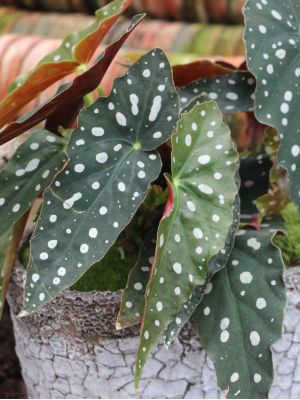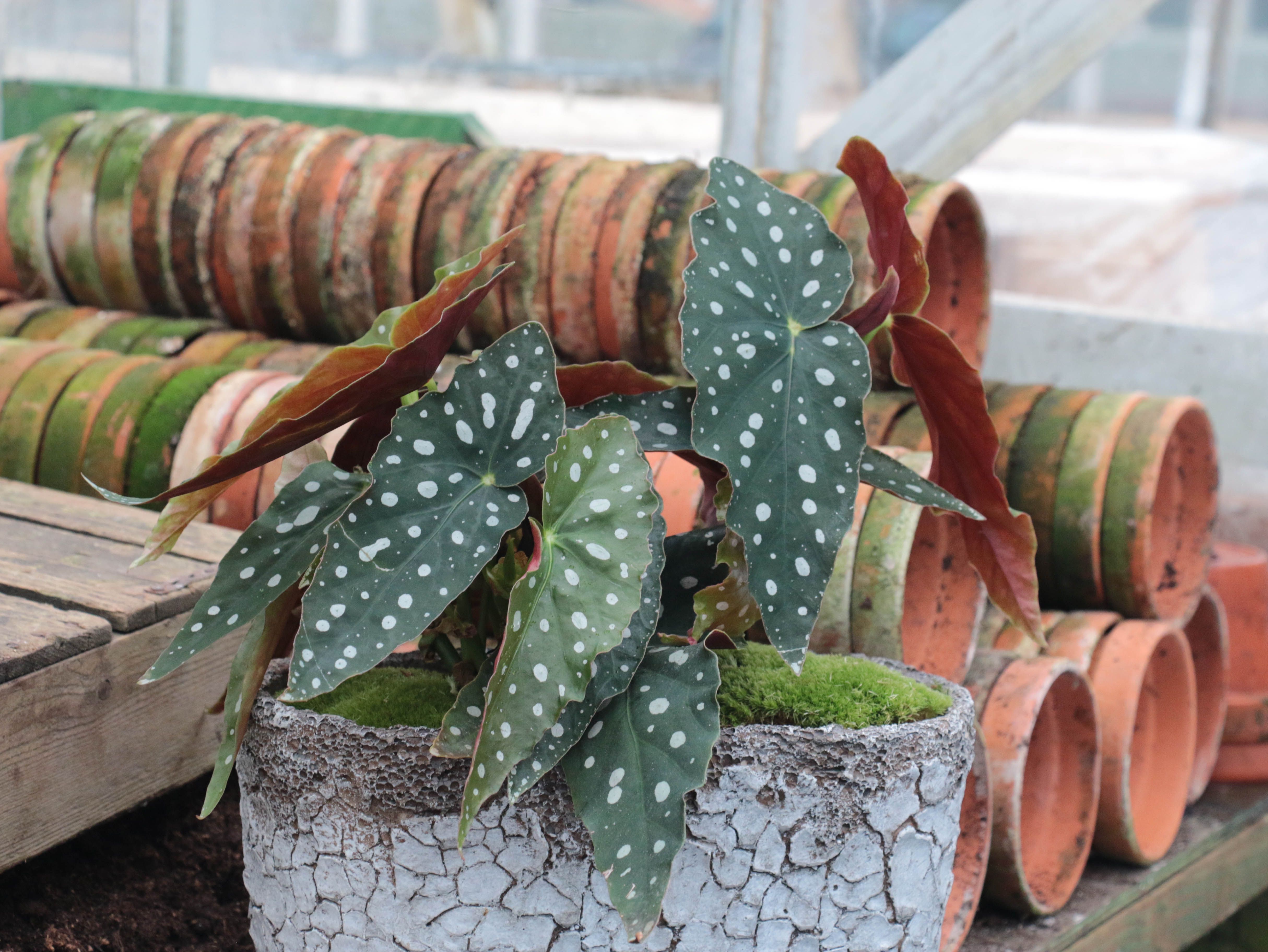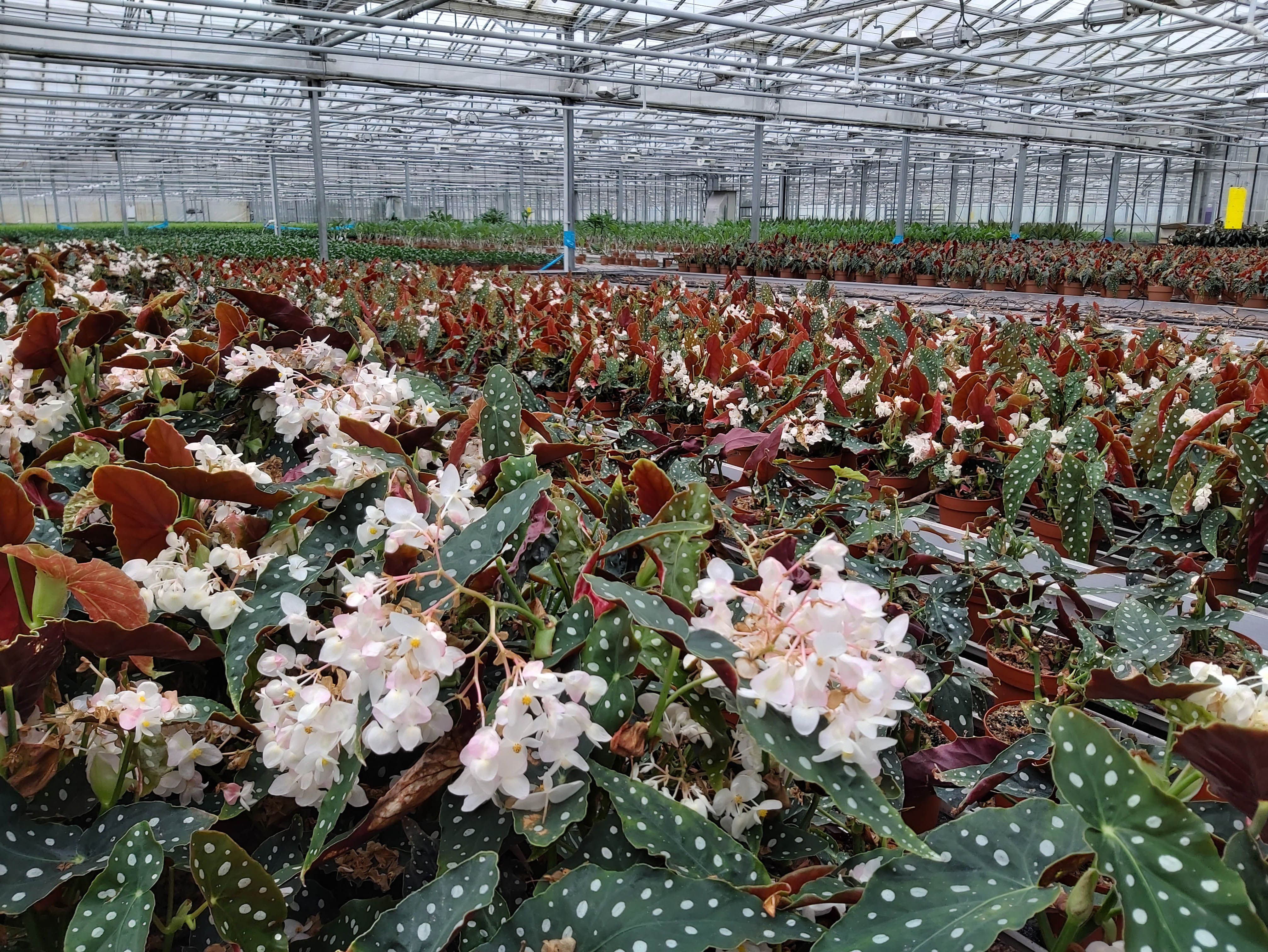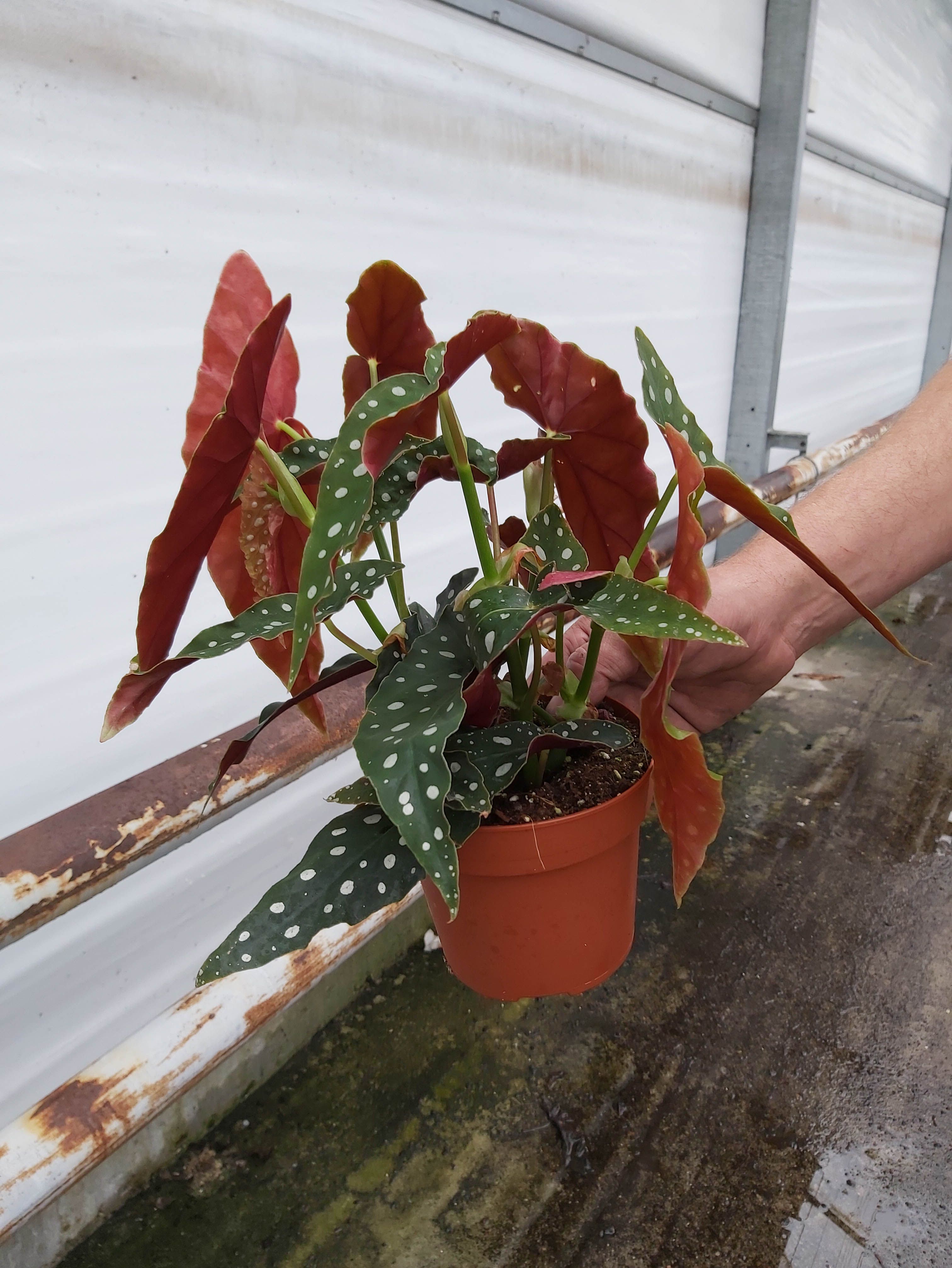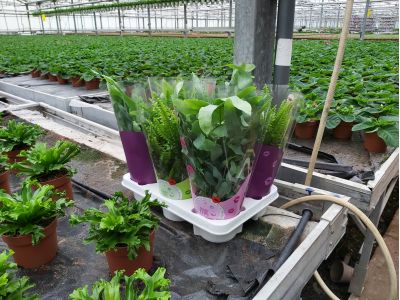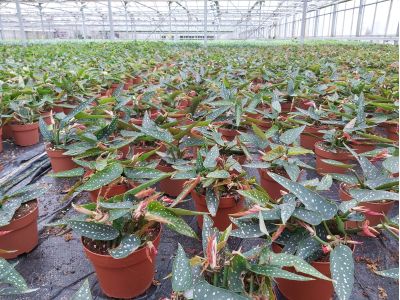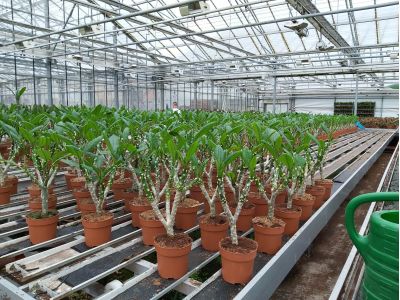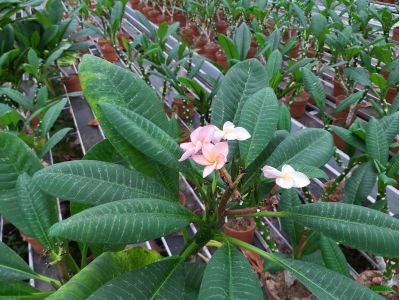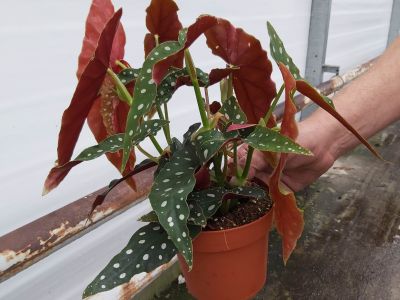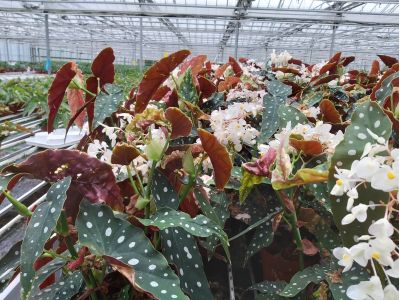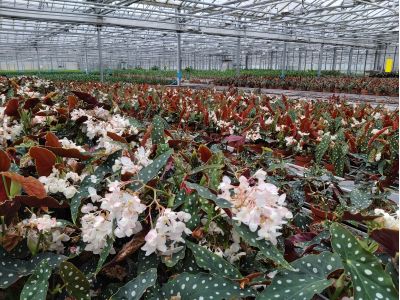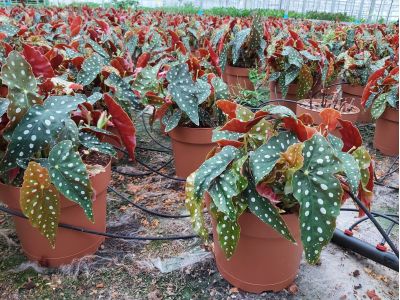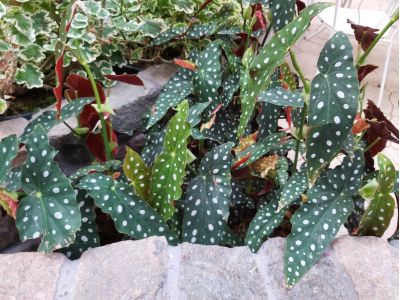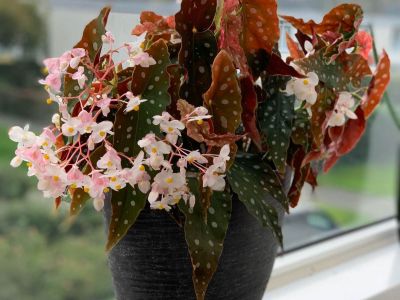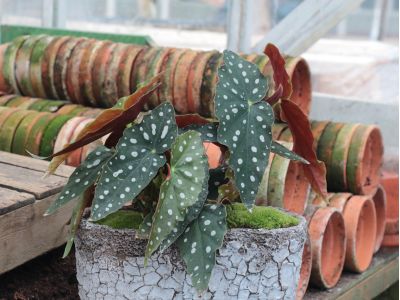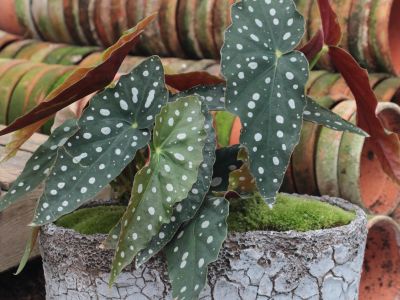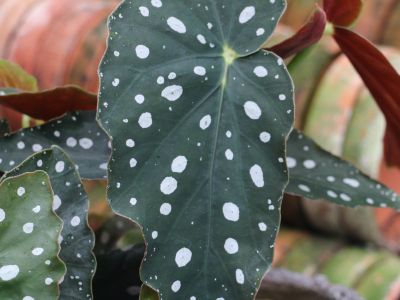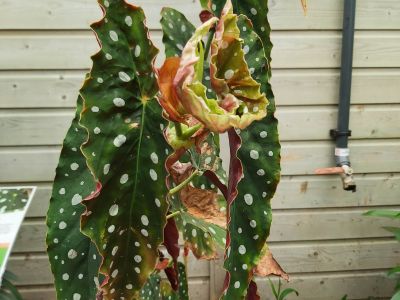Begonia maculata Wightii
In the spotlights
FloraPodium is always looking for special products. If one of the members encounters something special during a vacation, we naturally want to know more about it. What we encountered was a plant covered in white dots; a very special appearance. Our search led us to Maarten van der Hoorn, owner of the Amstelzicht nursery. He grows the Begonia maculata "Wightii" and told us more about it.
Crazy dots
One calls it the "Polka Dot Plant", the other "Polkadot" and the next "Trout Plant." All these names can be easily retraced if you look at this special plant. The Begonia maculata is mainly characterized by its white dots on the leaf. The leaves are serrated and the underside of the plant has a beautiful deep red color.
Comeback
Plants are hip again. We want more green in the living room and the demand for green plants is increasing. The more variation and color in the living room, the more fun it becomes. The Begonia maculata with its distinctive colors and special pattern fits in perfectly. In addition to the special leaves, it has air-purifying properties. Harmful substances are broken down and oxygen is made from CO2.
Birthday present
On Monday morning, two years ago, one of the ladies came to the company canteen carrying a plant. It was a birthday present she had received over the weekend. A very old-fashioned plant actually, because you used to see this plant everywhere in the living rooms. The florist who sold this gift regularly sells this plant. The customers were always very enthusiastic about this.
"Can I cut it into pieces?" Was Maarten's question. "You will get a new one in return." That's how Maarten started growing the Begonia maculata "Wightii" two years ago. He has made several cuttings from the cut plant. Two years later he has a large number of mother plants from which he still makes new plants.

Care
This dotted appearance originally came from the tropical rain forests of Brazil which is why the plant does well in moist soil but cannot tolerate cold. Then again; too much water is no good either! Chances are the roots will rot, causing brown leaves that fall off. And take care to only water the plant on the soil, never spray the plant.
The plant prefers a warmer place, but not directly in the sun because the leaves will burn. The plant also likes it if you give it plant food once a month.
If the plant is well cared for it can grow quickly. If the plant needs to be repotted, preferably do this in the spring. Long branches can possibly be shortened. The leaves will branch, causing the plant to grow wider.
The begonia juice is poisonous, just like many plants! Do not place the plant where children or animals can reach it.
The cultivation
Kwekerij Amstelzicht was founded in 1964 by Maarten’s father. A few years ago his father left the company because of his age. Maarten then continued on his own.
Maarten's father has started growing cut flowers. In the 1970s the company switched to pot plants. The company has several locations, each with its own cultivation specialization. Maarten grows various seasonal products such as Allium, Lavender and Peonies. He also grows bulb products and green and flowering house plants.
Maarten is always on the lookout for something new, he likes to stir things up and in his eyes no cultivation will last more than 10 years, with a few exceptions. His motto; “Growing without getting in your own way. You have to look back to get ahead. We look at last year, so that we can plan better this year".
That way you can plan about 70% for the coming year. The remaining 30% is difficult to estimate.
Maarten works on a small scale and therefore grows several products, making it easy to try something new every once in a while, although he has experienced how hard it is to bring something new to the market. What people don't know is hard to sell.
Manual work
Most of his cultivation is manual work. He does take this into account when selecting something new. He has plants in his assortment that require almost no maintenance. On the other hand, he can then plant a canopy that does require more work.
The advantage of this is that he can grow what large companies leave behind.
This year the number of Maculata plants is still relatively low. First he wants to experience how the product is received. What kind of start-up problems will he run into? Maarten has collected a lot of information about the cultivation. Maarten was surprised with regard to the flower; apparently it needs to be removed and that is done by hand. How is he going to schedule that? When does the flower bloom? The plant produces either leaf or flower. And this plant clearly has its ornamental value in the leaves.
At this moment the mother plants are still in the greenhouse. Maarten would prefer to outsource that part of the growth process. He is working on a new breeding system, but this has been delayed. This is for the future.
In the summer of 2020 he really wants to go into production and then the challenge is to have solved 80% of the problems he has encountered in the past year.
FloraPodium, 9 December 2019






